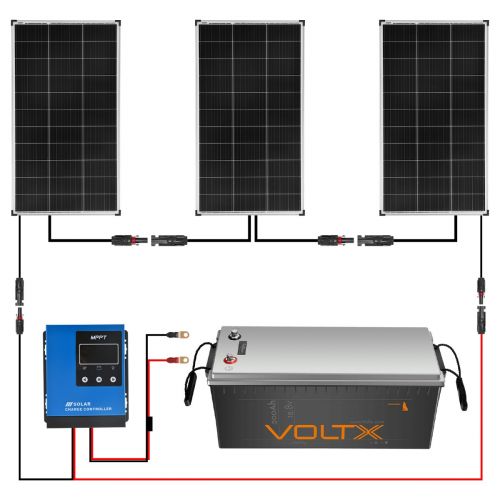
The benefits of solar panels and battery pairing are not new to Aussies. Being big on renewable energy use, solar panel and battery packages are popular in various fields in the country including residential, commercial, and recreational sectors.
If you're a newbie venturing into the world of solar power and were initially amazed at how beneficial solar panels are, you're in for a bigger & better surprise once you pair them with a solar battery. This power pack mainly serves as a storage for the energy initially generated by your panels, which is why they are often referred to as "solar battery storage."
Sounds really nice, right? But before we get all excited about going solar, let's address this pressing question: how do you connect your solar panels to a battery? Sure, it's mostly your installer's problem, but having basic knowledge about this is essential for anyone switching to solar energy use. It might even save you from a costly installation or repair job!
How To Connect Solar Panels To a Battery: Step-By-Step Process
Step 1: Mount Your Solar Panels
Did you know that your solar panel's position largely affects its efficiency? This is why aside from mounting them securely, it's also important to angle them in a way that they'll get enough sunlight exposure. This is particularly important if you’re installing fixed solar panels since these can be hard to adjust once they’re installed.
Step 2: Set up the solar charge controller and battery

Most solar panel setups use a standard 12V battery but regardless of your power pack's voltage or capacity, the most crucial thing is to use a solar charge controller in between it and your solar panels. This regulates the energy generated by your panels which will flow into your battery and help avoid overcharging as well.
The instruction for connecting the regulator to your 12V battery is usually found in the manufacturer's instructions and are simple enough to follow, so make sure to refer to them throughout the entire process.
Important: Charge controllers can either be PWM regulators or MPPT solar charge controllers. Of the two, MPPT is known to be more efficientyou might want to consider this when shopping for a regulator.
Step 3: Test Your Solar Charge Controller
After successfully connecting your charge controller to your battery, turn it on to see if it's working properly. This is where the advantage of MPPT controllers also comes inthey usually have more advanced features such as an LCD screen, which makes testing and tracking so much easier.
Step 4: Connect Your Charge Controller To the Solar Panels
Again, you're likely to find the instruction for this in the manual which explains everything up to the wiring process you should follow.
At this point, you would also need to consider installing a power inverter, especially if you're running electronics that require AC power. Solar panels generate direct current or DC power and while you can charge a battery for this, it's not suited for running large appliances and would have to be converted to AC current by an inverter.
Do You Always Need To Pair Your Solar Panels With a Battery?

Investing in a solar battery along with a good set of solar panels has tons of benefits. For one, these allow you to store energy and use it at a later time which can tremendously reduce your monthly electricity bills. It's also a good option for backup power in case of an outage or a main source of power for those living off the grid.
However, to ensure you'll get the most out of your money, figure out your daily power consumption first. A battery may or may not be suited for you depending on how you plan to use it plus, it can be pricey too. You don't want to make the mistake of buying and not being able to maximise its benefits. You can ask help from a professional to determine if installing a battery in your solar system is a good idea and if not, what other options are better for you.
If you do end up getting a power pack, opt for a lithium deep cycle battery such as a LiFePO4 battery for best results. These are superior in terms of overall performance and safety, perfect for use as a storage battery.
Ready to buy your solar essentials? Visit us at Outbax for great picks at even greater prices. We got them all hereflexible solar panels, 100Ah lithium batteries, and even power bundle kits! Visit our website today and start marking your picks.



